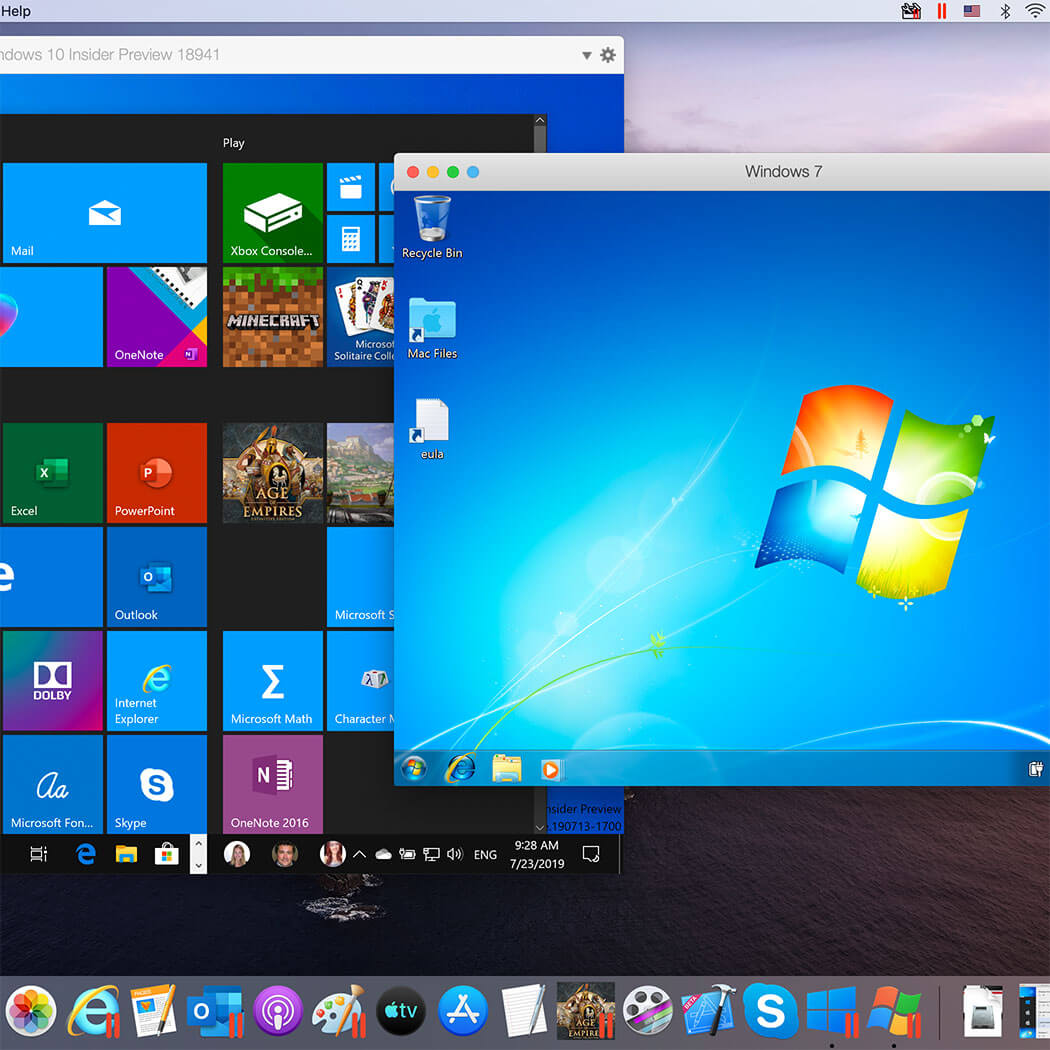
- #Parallels desktop 13 vm upgrade#
- #Parallels desktop 13 vm pro#
- #Parallels desktop 13 vm plus#
- #Parallels desktop 13 vm free#
#Parallels desktop 13 vm pro#
In the end I was convinced to get the 16 GB up front and I'm glad I did because of the above MS Office behaviour and because there will be no more Intel MacBooks made, as this entire line has been discontinued, and I am totally uninterested in the MacBook Pro and MacBook Air lines.
#Parallels desktop 13 vm upgrade#
Note that my original plan in 2017 was either just get a 16 GB MacBook, or else perhaps get an 8 GB MacBook and then upgrade in 2020 after it went quad-core. I suspect it is a memory leak but the bottom line is that while it will slow down a 16 GB MacBook, it's much worse on an 8 GB MacBook. For example, with extended usage, I can get MS PowerPoint to use over 3 GB RAM with just one presentation open. Some are due to the way they are designed, and some are just because they have design flaws, like memory leaks. The other point is that even outside of VMs some applications that don't require much CPU performance still eat gobs and gobs of RAM. But if you're doing other stuff, that 8 GB will get eaten up quickly. As for Geekbench, the performance you'll get out of it should be the same whether it's an 8 GB Mac or a 16 GB Mac, because if all you're running is Geekbench, you won't be RAM limited. 3 GB for the VM if you can get away with it, instead of 4 GB. But if you're stuck with 8 GB, just be frugal in the way you allocate RAM to the VM, and how you use your machine. (The 2015 model is slow, and while the 2016 is faster than the 2015, it is still slower than the 2017.) 8 GB is doable but is extremely limiting. If you're using it for Windows-specific low impact business software, the speed will be acceptable on a 2017 MacBook, as long as you have sufficient RAM, since the 2017 models actually have decent performance. Well, it depends on what you use the VM for. While CPU speed is important, IMO memory amount is more important than CPU speed in many cases. Geekbench may not really be that useful as a test for VM performance. If Apple still allows us to upgrade SSD and memory in the MacBook, nobody would tell you go for the 16GB model to begin with. If not because of necessity then because of peace of mind, knowing you won't run into unforeseen incidents due to lack of memory at some point. Right now, 8GB is the new 4GB, and I honestly just had this same debate (8GB vs 16GB) over in the MacBook Pro section. MacOS is fairly optimized but it's not the nimble lightweight little thing that it used to be, back in the Snow Leopard days.

So the trend is to use more memory, and as much memory as possible. Did you know the Slack app uses Electron? No? Watch its memory usage. Hell, with the Electron framework becoming more popular, eventually even your desktop apps are glorified websites.
#Parallels desktop 13 vm plus#
Open about 3 tabs pointing to the same site, plus run VM and you'll see your Mac hit swap. I can very easily write a website that will hog over 1GB of RAM just by itself (no need for 20 Safari tabs). With more and more web technologies being introduced, websites and web browsers are starting to become heavy resource hogs. and eventually you will run out of space. As you continue to use a computer, it will accumulate your personal documents, music, etc.
#Parallels desktop 13 vm free#
Even if you don't care that the computer gets tossed in the trash, swap makes it so you lose free storage space that can be used for something else. Considering the SSD is soldered on, when they go bad, all you can really do is toss the computer in the trash.

Forcing VM use on 8GB makes it easier to hit swapping. It's multiple factors, many of which you won't see now but will creep up eventually.


 0 kommentar(er)
0 kommentar(er)
